
Climbing 8 big mountains in 11 months required many things but proper gear was a must. In this post, I will review what I used, what worked, no what didn’t; taking it a layer at a time.
To review, I did 8 climbs with 7 summits in 11 months. They were: Vinson (Antarctica), Aconcagua (South America), Everest (Asia), Denali to 17K when stopped by weather (North America), Elbrus-North (Europe), Kilimanjaro (Africa), Carstensz Pyramid (Oceania), Kosciuszko (Oceania).
I will refer to the mountains as coldest: (Vinson, Denali and Everest) and warmest (Kilimanjaro, Carstensz and Kosciuszko) with Aconcagua and Elbrus in the middle.
I am not a sponsored climber by an outdoor company and bought the majority of my gear with my own money with a few exceptions I note.
CLOTHING
Base Layer – body and feet
I love merino wool and this year validated my confidence. I wore the same First Ascent (FA) top and bottom base layer on every climb – one pair without change. Even after 6 weeks up and down Everest, it never stank, felt clean and did what a base layer should do. While FA worked well, any merino wool base layer is a good .
I did use Patagonia polyester/spandex blend briefs while trekking and low on climbs and switched on summit pushes to a heavier Cloudveil wool/spandex brief for extra warmth.
As for socks, I bought the cheapest pair of merino wool socks from REI. I used the same four pairs for all eight climbs. I always kept a pair in reserve for my summit night. Also I used a pair of somewhat thick merino socks for lounging in the tent and especially cold nights in my sleeping bag. They never went into a boot.
As much I love my merino wool, I have a absolute favorite I have worn for years, the Mountain Hardwear Power stretch suit. It is made from Polartec and is warm, protects from wind pushing through layers and very comfortable as a one piece suit (with conveniently placed zippers front and back!). A life saver on the extreme days. I wore it on all the ‘cold’ climbs for summit night and always above C2 on Everest.

Head, Hands and Eyes
First on the head covering, it is critical to note that every, and I mean every, jacket I own has a hood. It is a critical part of my overall system so when it gets windy or cold, I pull it up. I also wore a wool knit cap I bought 10 years ago as my primary skull hat. It is simple and effective. I took a ball cap for full sun days but only occasionally used it. I carried a full balaclava but again almost never used it, even on the Everest summit push.
I used a thin Buff and it was a critical item keeping my neck and face warm but allowing easy ventilation. A must have on every climb.
I wore several thin pairs of running gloves that wore through on every climb but protected my hands from excessive sun on the treks to base camp. My go-to gloves were from Mountain Hardwear (MH), where I had a pro deal. I used their Torsion gloves as my primary, mild weather layer and on Carstensz where the rock was razor sharp.
As I gained altitude or the weather closed in I used the MH Medusa full gauntlet gloves with an incredible removable fleece liner. I user the liner more often than any other glove. But when it got cold, I pulled the Medusa’s on and was never cold.
On Everest I used my Black Diamond (BD) Mercury Mitts with the MH liner. I could hold my ascender and clip in and out of the fixed ropes just fine. And my hands never got cold even in -20F temps at 40 mph winds. I did use chemical hand warmers from Grabber on Vinson, Denali and Everest – they worked well but not as long as advertised.
Eye protection was simple, I used a pair supplied to me from Julbo, the Explorers. They were comfortable, and protected my eyes in all conditions from blizzards to bright sunny day. I liked the integrated strap for a tight fit in windy conditions. While I wore goggles on Everest, I could have used the Explorers from base camp to summit and back. The lenses did fog and freeze up on Vinson. I used the fashionable Beko nose guard on Denali.
Outer Layers
Bottoms
For the treks, including in and out on Everest and the warm climbs, I used the MH Matterhorn, zip-off thin nylon pants. On occasion I wore my base layer bottoms under these on chilly days.
High on all the mountains, including Everest, I wore my Patagonia Guide Pants. They are lined and have a wind proof outer shell (polyester/spandex). My legs were never cold even in Antarctica when the temps were -30F at times. I appreciated the suspenders as I lost weight. Extremely satisfied with these pants.
I almost always carried my emergency layer of the Arcteryx full Gortex Bibs on the coldest climbs. They serve as my bomber layer in extreme conditions – wind and water proof. I never used them on any climb, except Aconcagua, but they have saved my bacon several times in harsh conditions.
I only experienced rain twice: Kili and Carstensz. Both times the Patagonia Rain Shadow jacket and pant were perfect – breathed well and kept me dry.
I packed the MH Chugach pant for the coldest weather climbs (Vinson, Denali, Everest) and use them as a base camp lounging layer. They were warm and comfortable and added another layer if I ever got cold in my sleeping bag.
Tops and Shells
I always started with a merino wool (Ibex) as my shirt. If it was cold, I started with the wool base layer (FA).
If I was a bit chilly due to wind, I wore my Marmot Wind Shirt. It weighs nothing and is always in my pack – and of course it has a hood! On this mid layer, I also used the Patagonia R1 Hoody. Very warm when used with layers and comfortable to boot.
If it was raining like on Kilimanjaro or in wet snow on Everest in the Western Cwm, I wore my Patagonia Rain Shadow. In windy conditions, I only used my Patagonia Jetstream jacket. Both accommodated my climbing helmet.
I almost always had my Feather Friends Volent Jacket with me. This is an 800 fill down jacket (with hood) that I wore high on Everest and on breaks (Denali, Vinson) and when the winds and temps were extreme. Of note, many gear lists ask for heavier jackets but I have always been happy with this level. This was my warmest layer not counting my The North Face down suit that I used only on Everest.
Feet (boots)
Maybe the most critical item on my list, and the one I had the most difficulty with. I had two categories: trek and climb. Kayland had provided me with several boots and mostly they performed well.
The key characteristic required for the 7 Summits was durability. I wore the Kayland Vertigo High for most of the treks and they worked well but failed me high on Kilimanjaro when I sprained my ankle. I used the Montrail Feather Peak with good results trekking on Kosciuszko and rock climbing on Carstensz Pyramid.
On Aconcagua, Elbrus and Denali I used the Kayland 6001 mid weight boot. My feet got a little chilly and sometimes felt damp but otherwise they worked well and were lighter than a heavier double plastic boot. I did wear my 40 Below overboots with them on Denali and loved the overboots.
On Everest used the Kayland 8001 boot with integrated gator similar to LaSportiva and Koflach. My feet stayed warm and I was pleased with the boot until the zipper failed. Thankfully it was after my summit but I was still on the South Col. I used string and duck tape to keep them together until I got down. Of note, this is not uncommon on many of these 8000m high gator boots so it is good to be prepared.
I used the Hotronics footbed warmer on Everest but they gave out after 3 hours into my 12 hours day. While the batteries were going, they did add a bit of warmth to my feet.
On Denali I used my trusted Atlas 12 Series snowshoes.
Sleeping
I used three different sleeping bags. For the coldest climbs, I used a MH down filled -20F Wraith bag and absolutely loved it. No need for the heavy and expensive -40 bag. The MH down filled 0F Phantom worked very well at base camp on the coldest and as my primary bag on the warmest. I did use a +20F synthetic bag on Carstensz where it was extremely wet.
For pads, my primary pad for all climbs was the Exped Downmat – very comfortable and warm. On the coldest climbs I added the Therm-a-Rest Z Lite pad.
For creature comfort, I always used a cotton pillow case (airplane sized) stuffed with my down jacket as a pillow, wore a pair of thick merino wool socks when extra cold and lounged in a fantastic pair of down booties from Sierra Design. On Denali, with the 24 hour sun, I used a pair of eye shades. Finally, I always slept in my wool knit skull cap.
I used a Naglene collapsible canteen as a pee bottle.
Technical Equipment
My only harness throughout the climbs was the Black Diamond (BD) Chaos. Easy to get on and off with adjustable leg straps and double back belt. Also easy to attach or detach a variety of ‘biners as needed. Not as complicated as the often recommended BD Alpine Bod which requires ‘biners to complete the belt.
My crampons were the BD Sabertooth Pro. I used the BD Raven Pro 75cm Ice Axe and my old Petzel Erin Rock Helmet. I bought a new BD Tracer but it was crushed in my duffel bag during transit.
I mostly used BD carabiners and preferred the Nitron which has a smooth nose for easy on and off to fixed lines. My lockers were BD and jumar was my old trusted Petzel. The rappel device was the big BD Super 8 model to accommodate frozen ropes.
I mostly used a headlamp from Princeton, the Quad BL and carried as a backup, the BD Ion. I only used lithium batteries.
I took a pair of the BD Trail Shock pole and used only one most of the time and sometimes not at all.
Packs
I used the 85L Osprey for Vinson, Aconcagua, Denali and Elbrus where I carried large loads but preferred the Mountain Hardwear 70L South Face for smaller loads on Everest, Kili, and Carstensz. I would replace the Osprey with the MH BMG pack for my next big load trip. I used my very old BD 45L Shadow pack as my main trekking pack
I packed everything into two Gregory XL duffel bags. Both have held up well for years.
I never used my trusted MSR Dromedary hydration system but deferred to the old reliable Nalgene bottles for liquid.
Tents
My tents were supplied as part of the group gear. I ended up sleeping in Mountain Hardware Trango 3 or 4 person tents or the Eureka version. Both performed very well.
Stoves
The MSR Dragon Fly or XGK-EX is the favorite around the world.
Electronics
I used satellite phones to update this blog from across the globe. Thuraya was the phone on Everest but Iridium for all the other climbs, which was a mistake. I had continuous issues with Iridium not keeping a connection thus limiting my upload of pictures with my text dispatches. it was very frustrating and expensive. I recommend Thuraya when you can but they do not have coverage for Aconcagua, Vinson and Denali.
I used the SPOT GPS tracker successfully. It allowed my family and friends to see where I was every step of the way all the way to the summits! Highly recommended.
I took my Apple MacBook Air on all the climbs and to Everest Base Camp. it worked extremely well as did my iPods. My trekking camera was my old standby, a Nikon D50 and for climbing I took my Canon G7 but it failed on Everest so I switched to a Canon SD870 IS which worked very well.
Food and Snacks
Honey Stinger was my primary snack food. They gave me a nice discount and I found the honey was more digestible for me than other ‘energy bars” but everyone is different in this area. I liked the CamelBak electrolyte tablets for my water – added flavor without being overbearing and made a difference in how I felt.
Summary
I have used most of this same gear for many years and it works for me. That said, there is a lot of good choices in the gear market today. The biggest mistake I saw was that many of my teammates brought too much gear – too many jackets especially. I used the same core set of gear for every climb thus reducing my weight plus simplifying the process when I needed to grab a piece quickly. And as always, mountaineering gear is all about layers – having the right ones on at the right time – not too cold, not too hot.
Most of the gear I used and list on my site have newer versions but rarely offer a significant improvement so look for the features as you shop. As always, I recommend using the website Spadout (no affiliation whatsoever) to shop for the absolute lowest prices on gear. I rarely have paid full retail for any of mine.
Standouts/Must Have by Mountain:
Vinson
Eye care: Julbo Explorer
warm sleeping system: MH Wraith -40F plus Exped Downmat
Aconcagua
Sturdy hiking shoes
Everest
Eye care: Julbo Explorer
Shell Pants: Patagonia Guide pants
Warm sleeping system: MH Wraith -20F plus Exped Downmat
Warm summit system: down suit, 8000m boot
Denali
Eye care: Julbo Explorer
Shell Pants: Patagonia Guide pant
Warm sleeping system: MH Wraith -20F plus Exped Downmat
Versatile Jacket system: FF Volent, Patagonia Hoody, MH Jetstream
Elbrus (north)
Warm summit layers: Patagonia MicroPuff, Patagonia Hoody
Kilimanjaro
Rain gear: Patagonia Rain Shadow jacket and pant
Sturdy hiking shoes
Carstensz Pyramid
Sturdy gloves: MH Torsion
Durable sleeping bag: MH +20F synthetic
7 Summits Standout Gear
- First Ascent Merino wool top and bottom base layer
- Mountain Hardwear Power Stretch Suit
- Patagonia Guide Pants
- Patagonia Micropuff Jacket
- Patagonia R1 Hoody
- Buff
- Julbo Explorer Sunglasses
- Mountain Hardware -20F Wraith Sleeping Bag
- ExPed Downmat
- Mountain Hardwear South Face pack
- Black Diamond Sabertooth Pro Crampons
- Sierra Design Down Booties
- Black Diamond Mercury Mitts
You can see my complete list on my website.

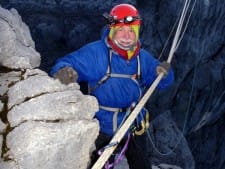
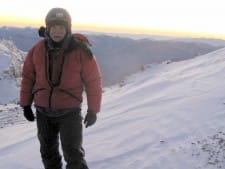
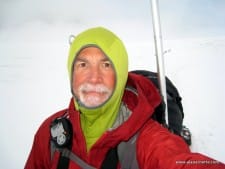
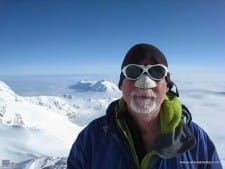
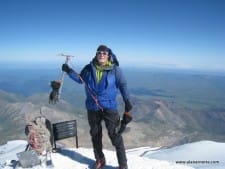
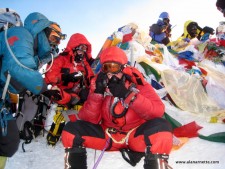
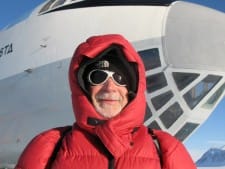
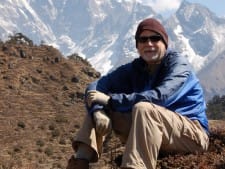
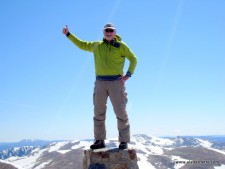
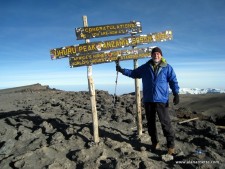
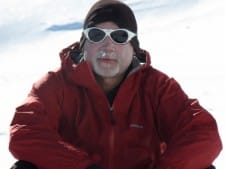
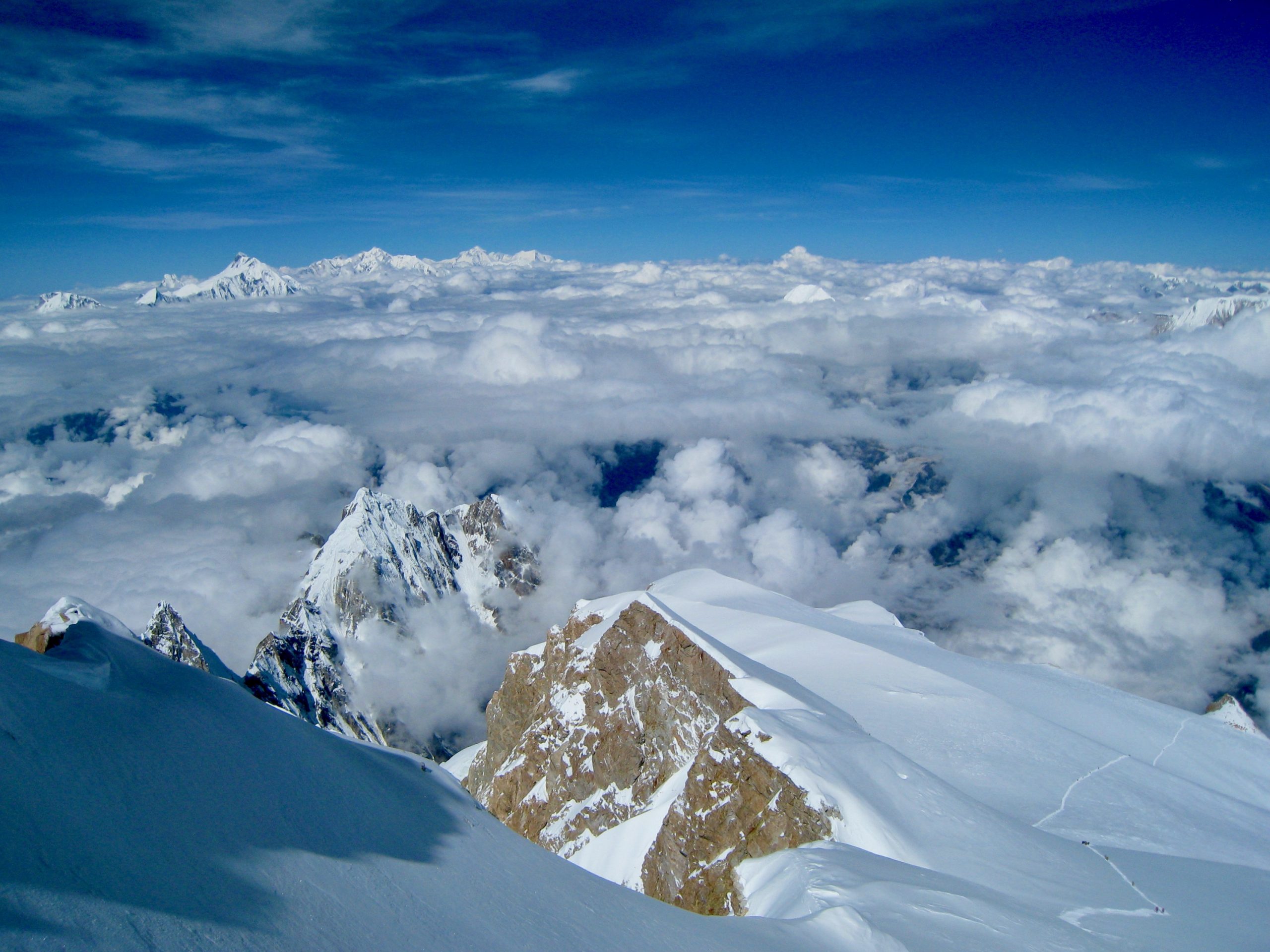
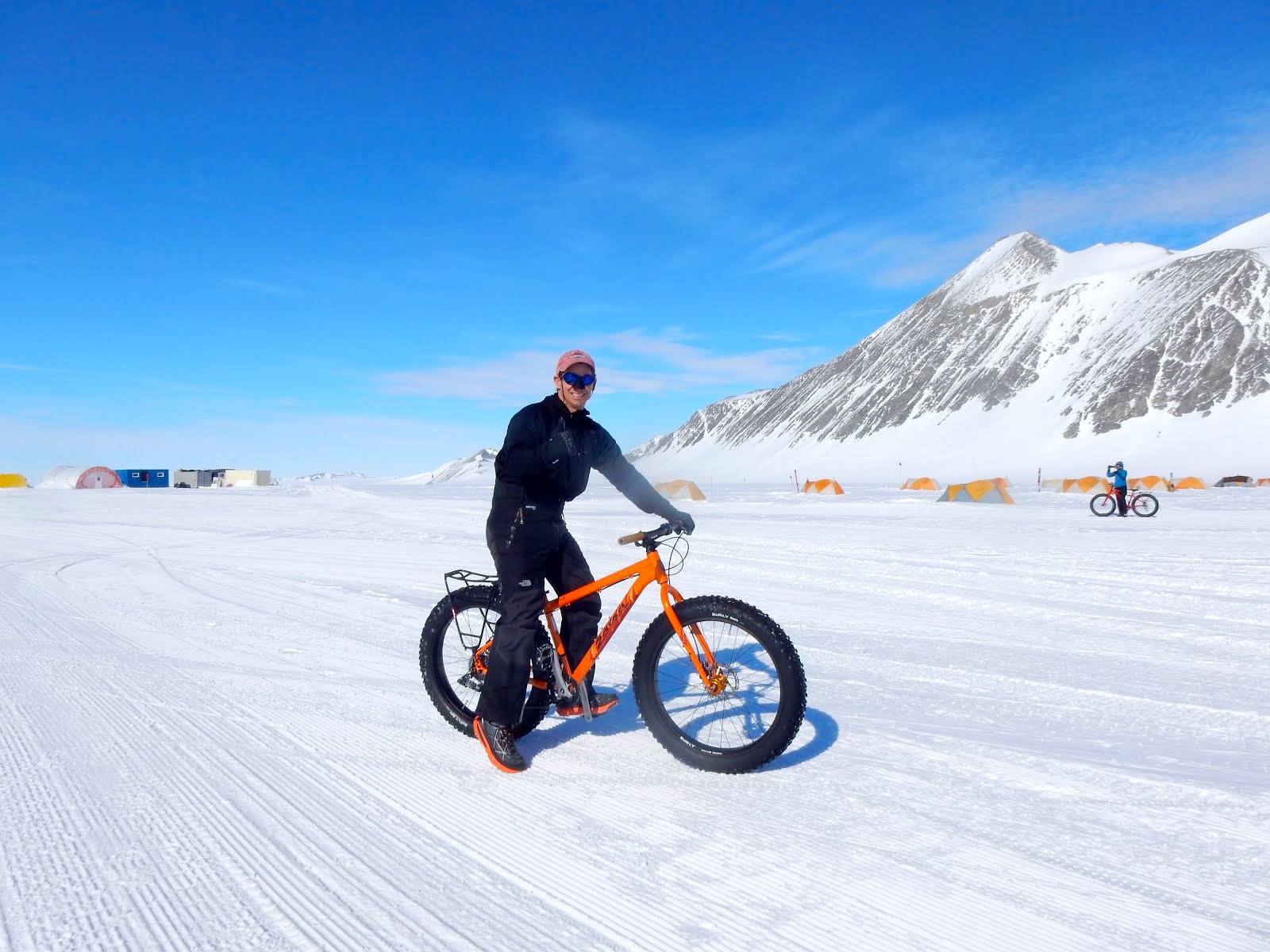

9 thoughts on “7 Summits Gear Review”
Hi thanks for the info it helped greatly in my upcomming Aco trip,Can i ask you what you used to charge your ipod etc whenyou were on Aco
RegardsKev
Thnaks Kevin, glad this was useful for your Aconcagua trip. I used a Feather Blaster solar panel to charge my sat phone, PDA, ipod, etc. There are many good solution’s these days from Burton, Goal 0 and others but I like these the best-
Thanks Alan for sharing your knowledge and insight of climbing gear. Your website continues to be the most informative one out there. Congrats on a great year!
Thanks, Alan – great info. And welcome home 🙂
Thanks Greg, I knew I was forgetting something and one of my favorite layers!! The MH Power stretch suit is a life saver and I wore it on all the ‘cold’ climbs for summit night and above C2 on Everest. Thanks for reminding me and I will update the post. Have fun on Aconcagua. You will appreciate the Power Stretch on summit night if it is cold and wind, umm when it is cold and windy!
Alan:
Thank you for the suggested gear list. I can’t tell you how many times I referred to your site when I was doing my own gear check/. Even if you think you have everything you need; it’s always comforting to see someone else’s suggestions just so that you can confirm your own are not way off base. I noticed that you didn’t refer to the MH power stretch suit, which in some of your other gear reviews was listed as a favourite base/mid layer. I was wondering if you’ve had a change of mind with respect to this piece of gear. I just bought one and was planning on trying it out on Aconcagua next week.
Thanks again for all the information on your site, your amazing Everest coverage and, of course, your support for Alzheimer’s research.
Greg
Thanks Todd, the gear I used was a result of trial and error (like jackets only with hoods) over the past 10 years but more like the last 3 to 5. Much of my gear is at least that old and still serves me well. I take care of it and good stuff that holds up so even though it is pricy (even on sale) it is less expensive than ing over and over or chasing the latest and greatest.
Seems like you had to prepare a long time shopping for the number of items needed for the climbs. How long? When going up in altitude, you want the best- so I’m impressed with your choices. Thanks for sharing!
Alan…great info and thanks for putting it together and sending it out.
John
🙂
Comments are closed.